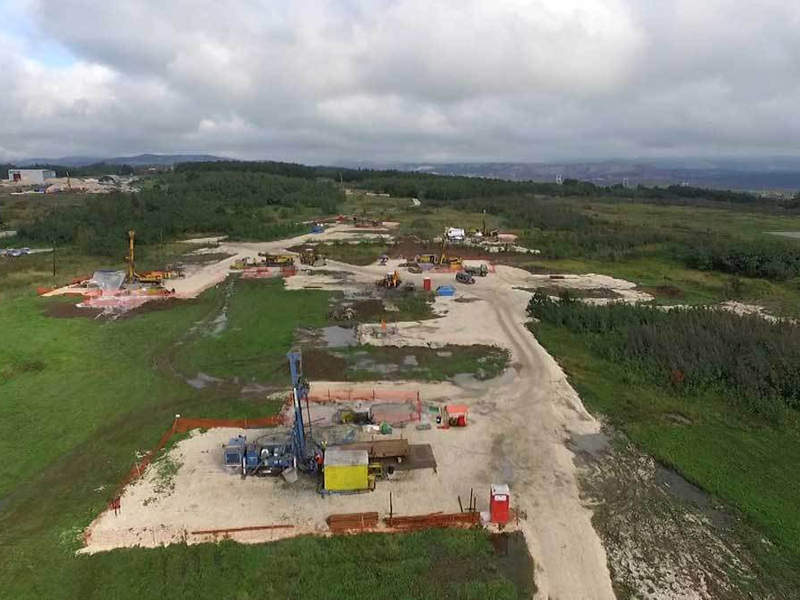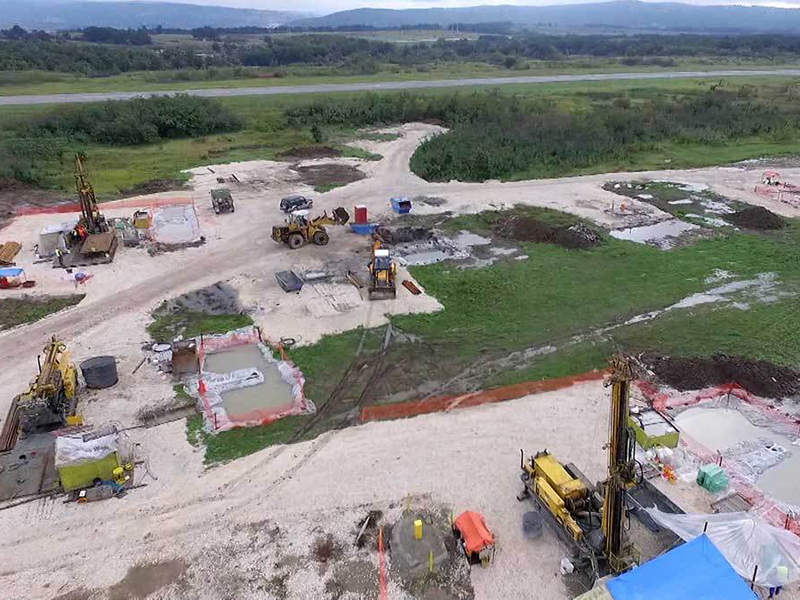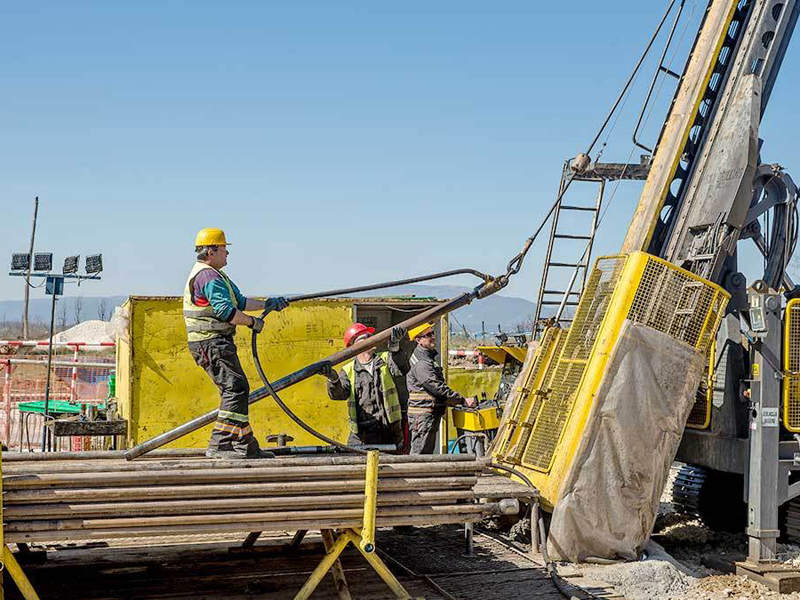The Timok deposit is part of the Timok copper-gold project located on the eastern side of Serbia, approximately 5km from the Bor mining complex and 250km south-east of Belgrade.
The deposit is categorised into two zones namely Čukaru Peki (Upper Zone) and the Lower Zone.
Nevsun Resources owns a 100% stake in the Upper Zone and a 60.4% stake in the Lower Zone. The remaining 39.6% in the Lower Zone is held by Freeport-McMoRan Exploration (Freeport) under a joint venture. Nevsun’s stake will decrease to 46% and Freeport will own 54%, upon completion of the feasibility study for the Lower Zone.
Development is currently focused only on the Timok Upper Zone project. The preliminary economic assessment (PEA) report for the project was updated in October 2017.
The exploration decline at the Upper Zone is expected to commence in the first quarter of 2018, while the feasibility study is expected to be completed in the first half of 2019. Nevsun anticipates to receive all permits and commence production in 2021.
Timok copper-gold project location
Located in the central zone of the Timok Magmatic Complex (TMC), the Timok copper-gold project is made up of four exploration permits namely Brestovac-Metovnica, Brestovac Zapad, Jasikovo-Durlan Potok, and Leskovo.
Spread over 212.58km², the exploration permits are held by Rakita Exploration, a Serbian joint venture between Nevsun and Freeport. The Timok deposit is part of the Brestovac-Metovnica exploration permit.
Timok deposit geology and mineralisation
The Čukaru Peki (Upper Zone) is a high-grade, high-sulphidation (HS), epithermal deposit associated with an advanced argillic alteration system.
HSE mineralisation consists of massive sulphide, semi-massive, and dissemination and hydrothermal breccia matrix sulphide, and is centred in a single coherent zone located at depths between 400m and 800m.
Pyrite is the dominant sulphide mineral found at the deposit, while the principal copper mineral is covellite with small amounts of enargite, bornite and chalcocite occurring in veins, hydrothermal breccias, disseminations and replacement.
Gold is primarily associated with the copper sulphides and mostly hosted in pyrite. It is also found in a number of forms including tellurides such as calaverite (Au), sylvanite (Au-Ag), kostovite (Au-Cu) and altaite (Pb).
The Lower Zone hosts low-grade porphyry copper-gold style mineralisation comprising quartz-sulphide veins and disseminated sulphides. The zone is situated approximately 200m beneath the Upper Zone and constitutes a telescoped porphyry system related to multi-stage diorite intrusion.
Reserves of Timok upper zone
The measured and indicated mineral resources of Timok Upper Zone are estimated at 28.7Mt. The mine is estimated to contain 1.05Mt of copper and 2.2Moz of gold grading 3.7% Cu and 2.4g/t of Au.
Timok Upper Zone mine development details
The underground Timok mine will be developed in three phases including exploration decline, mine infrastructure and development, and sustaining the mine infrastructure.
The exploration decline consisting of twin ramps will be drilled for approximately 2,800m to 400m below the surface. The decline will be used to access the mine, egress, and for material haulage.
The second phase will include installation of mine infrastructure including the first underground primary jaw crusher approximately half way down the orebody. The crusher is anticipated to support production for the first 7.5 years.
Sub-level cave mining method will be applied to the Upper Zone to recover ore. Primary ventilation will comprise a push/pull system featuring a fresh air raise and a return air raise (RAR).
Produced ore will be crushed in the underground jaw crusher and transported to the surface using an underground conveyor system that links to an overland conveyor and the processing plant.
The final phase includes the development of supporting mine infrastructure, which will provide access to lower production levels. It will include the installation of a second jaw crusher at the bottom of the orebody, which will be used for the last 7.5 years of the mine life.
Ore processing at Timok Upper Zone
Produced ore will be fed into a 3.3Mtpa conventional processing plant, which is estimated to process 8,900t of ore a day on an average.
The processing plant will be designed to produce a bulk copper concentrate for sale and pyrite concentrate to be stored for possible treatment to recover the contained gold and generate sulphuric acid from the contained sulphur.
It will also be capable of generating a low-arsenic clean copper concentrate, as well as complex copper concentrate with higher arsenic content if required.
The processing flowsheet consists of semi-autogenous grinding (SAG) and ball mill comminution circuit, copper flotation and regrind. It also includes three stages of cleaning, copper concentrate thickening and filtration, and pyrite rougher flotation.
Production
The mine is estimated to produce more than 2.1 billion pounds (0.96Mt) of payable copper over its anticipated mine life of 15 years.
Contractors involved
SRK, with support from Knight Piesold, Bluequest and Ausenco, prepared the PEA for the Serbian copper-gold project.
Dvoper was awarded the contract for supporting the permitting process, while ERM was engaged to conduct environmental impact assessment. ERM subcontracted a portion of the EIA to Envico.
Knight Piesold prepared the long-term tailings storage plan, while ERM/Envico designed the closure work.










